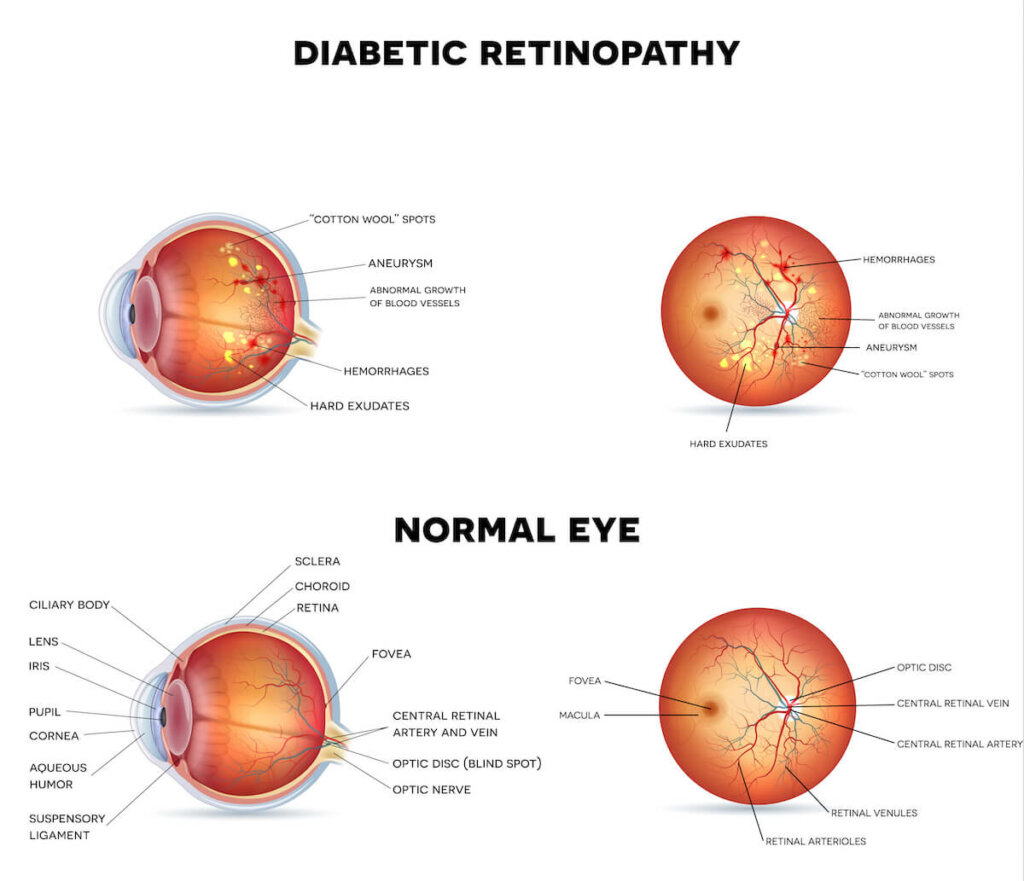If you are diabetic, you should have a complete dilated eye exam every year. Why? Diabetes can result in changes in the retina, also known as diabetic retinopathy. Early diabetic retinopathy does not usually have symptoms.
In later stages of the disease, blood vessels in the retina start to bleed into the vitreous, the fluid in the eye. You may see dark spots and webs, and this can cause permanent scarring and vision loss. It is very important that diabetic changes are diagnosed early and treated right away.

Am I at risk for diabetic retinopathy?
Anyone with diabetes can get diabetic retinopathy — including type 1, type 2, and gestational diabetes (diabetes that can develop during pregnancy).
The longer you have diabetes, the more your risk. 2 in 5 Americans with diabetes have some level of diabetic retinopathy. Controlling the disease can lower your risk of developing diabetic retinopathy.
What causes diabetic retinopathy?
Diabetes damages blood vessels all over the body. The damage to your eyes starts when sugar blocks the tiny blood vessels that go to your retina, causing them to leak fluid or bleed. To make up for these blocked blood vessels, your eyes then grow new blood vessels that do not work well. These new blood vessels can leak or bleed easily.



